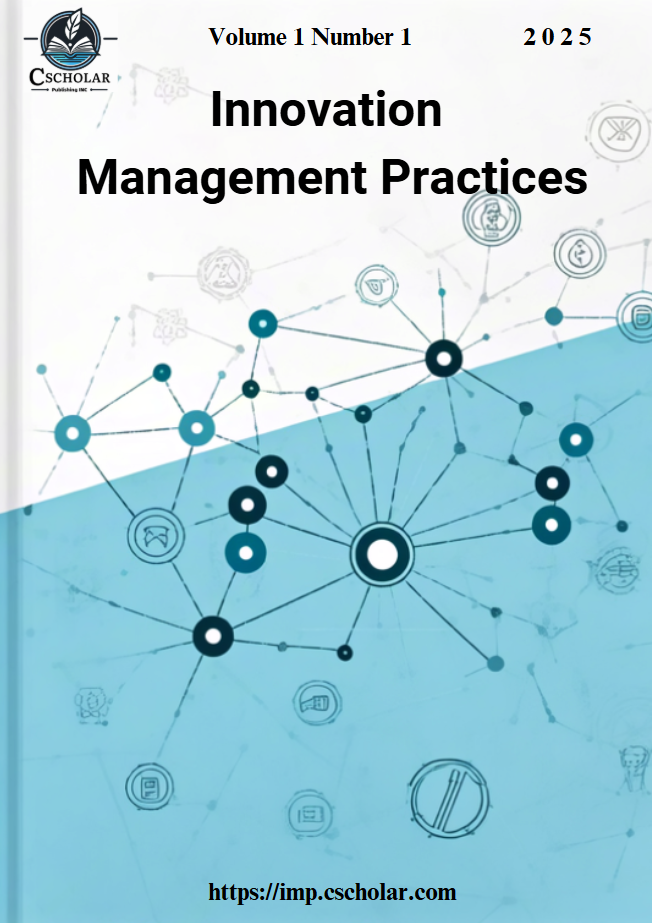Profit Quality Analysis on the Listed Company— A Case Study from CATL
DOI:
https://doi.org/10.71204/hvegwh86Keywords:
Profit Quality, Core Profit, Profitability, Growth, Cash Receipts, StabilityAbstract
Contemporary Amperex Technology Co.Limited (CATL) has emerged as a standout player in the fierce global and domestic competition and has gradually developed into the largest domestic battery power battery vehicle, becoming a benchmark company in China's new energy industry. In the stock market, investors pay attention to profit indicators to judge the operating development of a company, but there are also listed companies that adjust their profit totals to whitewashing their financial data. Profit quality, as a true reflection of a company's profitability, has gradually become an important indicator for investors to judge the authenticity of a company's financial statements. This paper conducts a case study on CATL, introduces the development of CATL and its industry, and selects the financial data of CATL from 2018 to 2023 to conduct a comprehensive analysis of its profit quality. The current study provides decision-making references for the company's shareholders, managers, and other relevant parties. In addition, the findings of this paper serve as an inspiration and reference for other companies in the same industry.
References
Aboody, D., Hughes, J., & Liu, J. (2005). Earnings quality, insider trading, and cost of capital. Journal of Accounting Research, 43(5), 651-673.
Andekina, R. & Rakhmetova, R. (2013). Financial analysis and diagnostics of the company. Procedia Economics and Finance, (5), 50-57.
Artikis, P. G., & Papanastasopoulos, G. A. (2016). Implications of the cash component of earnings for earnings persistence and stock returns. The British Accounting Review, 48(2), 117-133.
Bai, B. (2021). Analysis of factors affecting the quality of enterprise profits. Inner Mongolia Science and Technology and Economy, (02), 57-58.
Bonacchi, M., Marra, A., & Zarowin, P. (2019). Organizational structure and earnings quality of private and public firms. Review of Accounting Studies, 24, 1066-1113.
Dichev, I. D., Graham, J. R., Harvey, C. R., & Rajgopal, S. (2013). Earnings quality: Evidence from the field. Journal of Accounting and Economics, 56(2-3), 1-33.
Fan, Y. (2024). Discussion on financial risk management of manufacturing industry. China's Collective Economy, (14), 173-176.
Luo, G. (2022). Profitability analysis of listed companies-Taking company Z as an example. National Circulation Economy, (35), 52-55.
Melgarejo, M. (2019). The impact of corporate governance on earnings quality: evidence from Peru. Journal of Accounting in Emerging Economies, 9(4), 527-541.
Perotti, P., & Wagenhofer, A. (2014). Earnings quality measures and excess returns. Journal of Business Finance & Accounting, 41(5-6), 545-571.
Purwaningsih, A., Kusuma, I. W., & Barokah, Z. (2020). Earnings management, earnings quality, and culture: cross-country studies. International Journal of Economic Policy in Emerging Economies, 13(4), 422-430.
Shin, M., Kim, S., Shin, J., & Lee, J. (2018). Earnings quality effect on corporate excess cash holdings and their marginal value. Emerging Markets Finance and Trade, 54(4), 901-920.
Sulistiawan, D., & Rudiawarni, F. A. (2019). Industrial competition and earnings quality in Indonesia. International Journal of Economic Policy in Emerging Economies, 12(2), 121-129.
Wang, C. & Qu, H. (2022). Research on profit quality of M company. Business News, (05), 1-4.
Zhang, Q. (2023). Analysis on the profitability of enterprise N. Management and Technology of Small and Medium-sized Enterprises, (23), 54-56.
Zhang, W. (2023). Research on financial quality evaluation and development countermeasures of CATL based on financial statements. Modern Commerce, (15), 161-164.
Downloads
Published
Issue
Section
License
Copyright (c) 2025 Innovation Management Practices

This work is licensed under a Creative Commons Attribution 4.0 International License.





